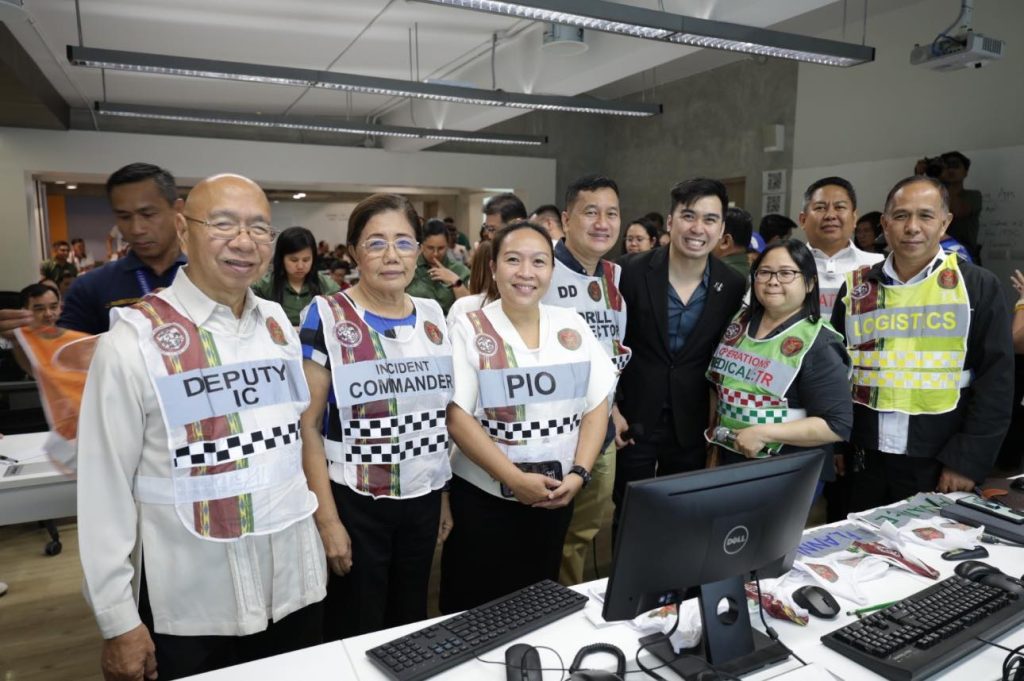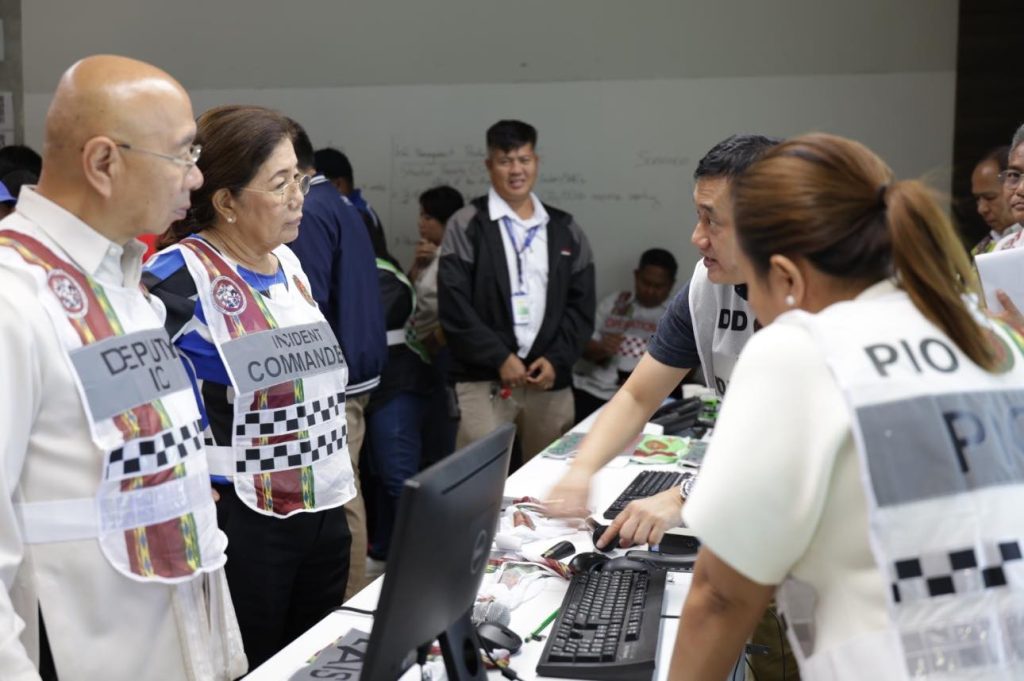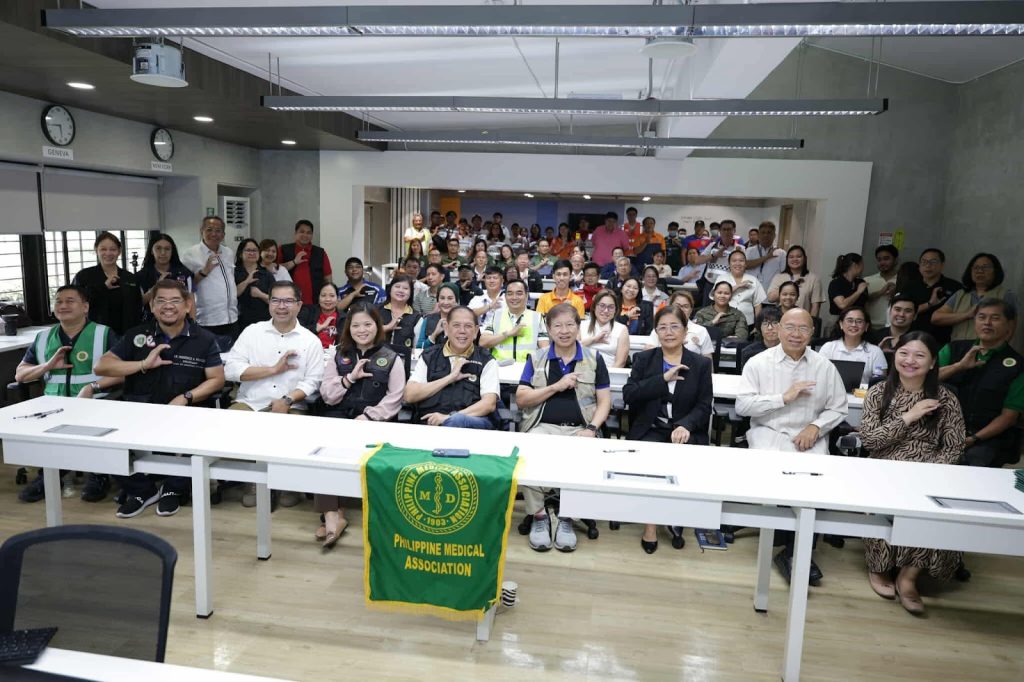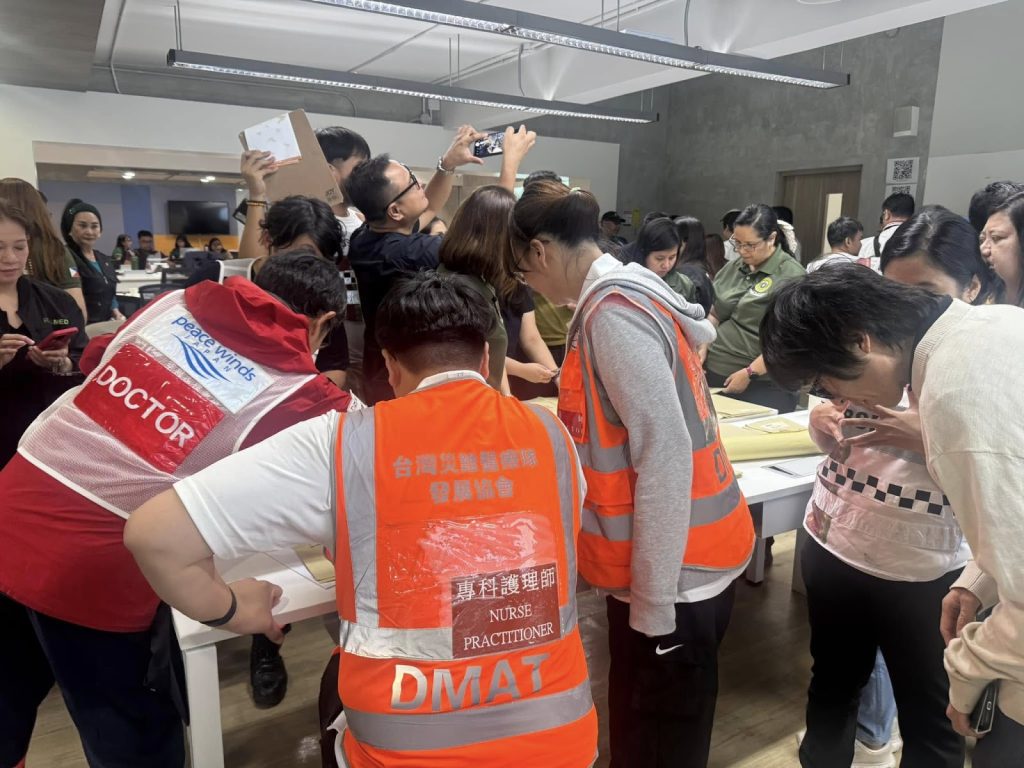CLARK FREEPORT — Clark took center stage in national disaster preparedness as it hosted Frontline 2025: Tripartite Medical Simulation Drill for Disaster Risk Mitigation on April 23–24 at the Philippine Disaster Resilience Foundation’s (PDRF) Emergency Operations Center.

From left to right: Jose Miguel de la Rosa, Vice President for Admin and Finance; Astrud Aguinaldo, Communications Manager; Dr. Dave Dato, Drill Director; and Dr. Jeremy Cordero, Drill Master, both from the Philippine College of Emergency Medicine. Also in the photo are Dr. Ma. Clemencita Dobles, Health and Sanitation Manager; Arnel Zamora, Building Facilities and Management Manager; and Col. Herbert Angeles (Ret.), Public Safety Manager. (CDC Photo)
The large-scale simulation revolved around a hypothetical 7.4-magnitude earthquake striking near Angeles City, Pampanga. Designed to replicate real-world disaster response scenarios, the drill involved simulated collapsed buildings—including a hospital and a medical school—to rigorously test emergency protocols and improve coordination with international aid groups.

At the heart of the exercise was a robust command structure led by retired PMGen. Lina Sarmiento, now vice president for Security Services at Clark Development Corporation (CDC), who served as incident commander on behalf of CDC President and CEO Atty. Agnes VST Devanadera.

Organized by the Philippine Medical Association, Asia Pacific Alliance for Disaster Management Philippines, and PDRF, the simulation underscores the critical role of cross-sectoral partnerships in crisis response. The exercise integrated government agencies, private sector stakeholders, and international responders to strengthen collective disaster readiness.

With climate-related and seismic risks on the rise, Frontline 2025 marks a key step in institutionalizing a whole-of-government approach to disaster mitigation—an approach increasingly demanded in the face of emerging global threats.




